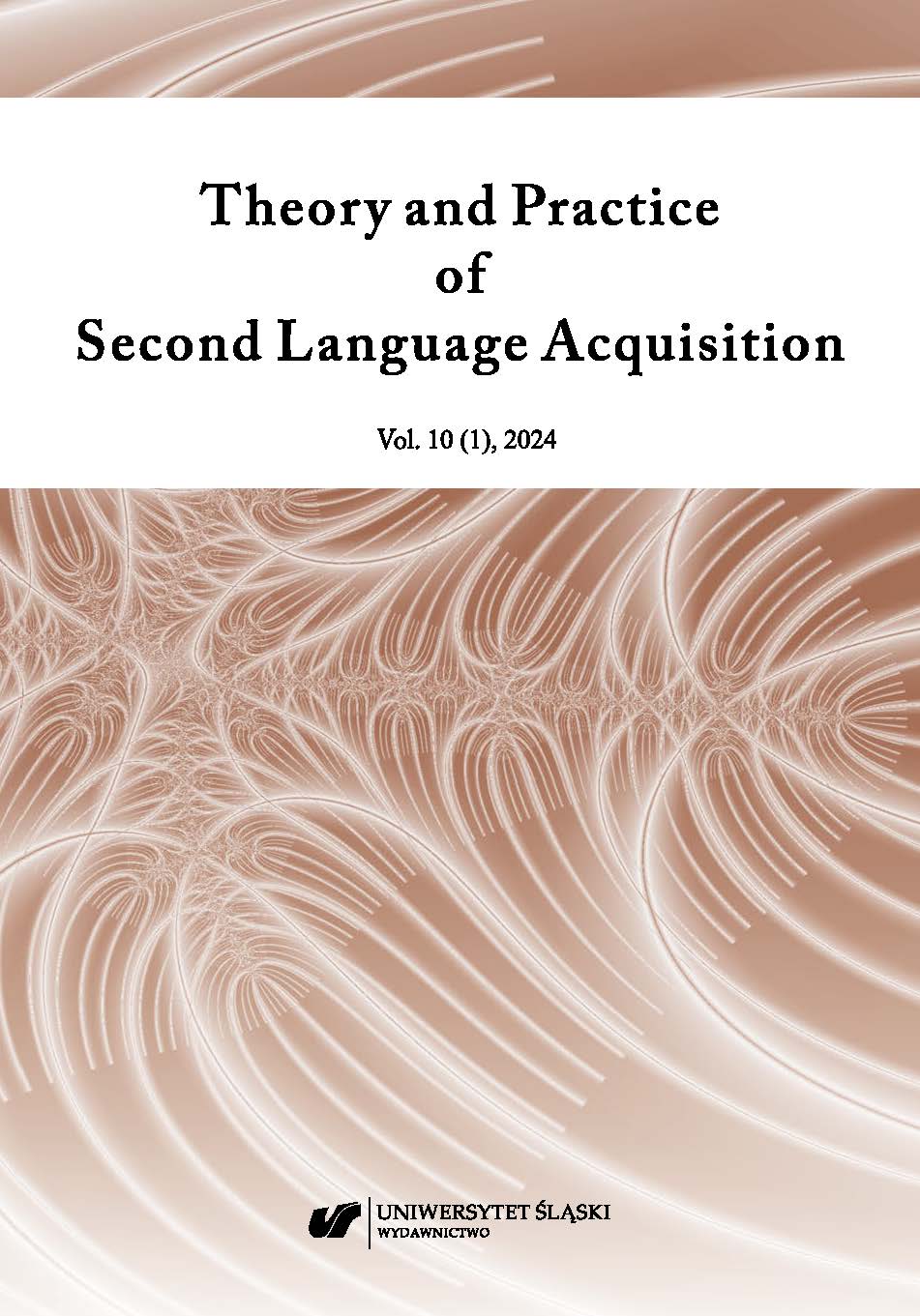Balcom, P. (1997). Why is this happened? Passive morphology and unaccusativity. Second Language Research, 13, 1–9.
Google Scholar
Hirakawa, M. (1995). L2 acquisition of English unaccusative construction. In D. MacLaughlin & S. McEwen (Eds.), Proceedings of the 19th Boston University Conference on Language Development (pp. 291–302). Cascadilla Press.
Google Scholar
Hirakawa, M. (2006). ‘Passive’ unaccusative errors in L2 English revised. In R. Slabakova, S. Montrul, & P. Prevost (Eds.), Inquiries in linguistic development. John Benjamins.
Google Scholar
Ju, M. K. (2000). Overpassivization errors by second language learners. Studies in Second Language Acquisition, 22, 85–111.
Google Scholar
Kondo, T. (2009). Argument Structure Morphosyntactic Links in the Second Language English of Adult Speakers (Doctoral dissertation). University of Essex, UK.
Google Scholar
Kondo, T. (2019). The acquisition of intransitive verbs by second language learners. In T. Shirahata & K. Suda (Eds.), Application of language acquisition research (Monograph series 3 for second language research) (pp. 31–68). Kuroshio Publishers (in Japanese).
Google Scholar
Kondo, T., & Shirahata, T. (2015). The effects of explicit instruction on intransitive verb structures in L2 English classrooms. Annual Review of English Language Education in Japan (ARELE), 26, 93–108.
Google Scholar
Kondo, T., & Shirahata, T. (2018). Explicit instruction on English verb structures in L2 classrooms. In I. Walker, D. K. G. Chan, M. Nagami, & C. Bourguignon (Eds.), New perspectives on the development of key competencies in foreign language education (pp. 157–179). Mouton De Gruyter.
Google Scholar
Kondo, T., Otaki, A., Suda, K., & Shirahata, T. (2015a, June). Japanese learners’ usage of be + -en Form with English unaccusative verbs. Talk at the Japan Second Language Association 15th Annual Conference. Hiroshima University, Japan.
Google Scholar
Kondo, T., Otaki, A., Suda, K., & Shirahata, T. (2015b, July). Animate and inanimate contrast in the acquisition of unaccusative verbs. Talk at the 17th Annual International Conference the Japanese Society for Language Science. Beppu City, Japan.
Google Scholar
Kondo, T., Otaki, A., Suda, K., & Shirahata, T. (2016). Occurrences of unaccusative verbs in English textbooks and their acquisition. Journal of the CELES, 45, 53–60.
Google Scholar
Kondo, T., Shirahata, T., Suda, K., Ogawa, M., & Yokota, H. (2020). Effects of explicit instruction on intransitive and transitive verbs in second language English: with a special focus on non-instructed verbs, Annual Review of English Language Education in Japan (ARELE), 31, 81–96.
Google Scholar
Montrul, S. (2000). Transitivity alternations in L2 Acquisition: Toward a modular view of transfer. Studies in Second Language Acquisition, 22, 229–273.
Google Scholar
Montrul, S. (2001). First -language-constrained variability in the second language acquisition of argument-structure-changing morphology with causative verbs. Second Language Research, 17, 144–194.
Google Scholar
Oshita, H. (1997). “The accusative trap”: L2 acquisition of English intransitive verbs (Doctoral dissertation) University of Southern California, Los Angeles.
Google Scholar
Oshita, H. (2000). What is happened may not be what appears to be happening: A corpus-study of ‘passive’ unaccusatives in L2 English. Second Language Research, 16, 293–324.
Google Scholar
Perlmutter, D. M. (1978). Impersonal passives and the Unaccusative Hypothesis. Proceedings of the 4th Annual Meeting of the Berkeley Linguistics Society. UC Berkeley. pp. 157–189.
Google Scholar
Sato, K. (2015). Why does overpassivisation of unaccusative verbs happen?—focus on *An accident was happened. Keisuisya (in Japanese).
Google Scholar
Shirahata, T., Kondo, T., Suda, K., Otaki, A., Ogawa, M., & Yokota, H. (2019). The learning and teaching of inanimate subjects: The case of Japanese learners of English, Annual Review of English Language Education in Japan (ARELE), 30, 1–16.
Google Scholar
Shirahata, T., Kondo, T., Ogawa, M., Suda., K., Yokota, H. & Otaki, A. (2020). A study of overpassivisation of English unaccusatives by Japanese learners of English. In T. Shirahata & K. Suda (Eds.), The spillover effect of second language acquisition research—from core grammar to L2 utterance (Monograph series 4 for second language research) (pp. 31–55). Kuroshio Publishers (in Japanese).
Google Scholar
Sorace, A. (2000). Gradients in auxiliary selection with Intransitive Verbs. Language, 76, 859–890.
Google Scholar
Szcześniak, K. (2022). Memory of formulaic sequences in L2 retention of chunks featuring inchoative uses of unaccusative verbs. LINGUISTICA SILESIANA, 43, 43–64.
Google Scholar
Yip, V. (1995). Interlanguage and learnability: From Chinese to English. John Benjamins.
Google Scholar
Yusa, N. (2003). ‘Passive’ Unaccusatives in L2 Acquisition. In P. M. Clancy (Ed.), Japanese/Korean linguistics, 11 (pp. 246–259). CLSI.
Google Scholar
Zobl, H. (1989). Canonical typological structures and ergativity in English L2 acquisition. In S. Gass & J. Schachter (Eds.), Linguistic perspectives on second language acquisition (pp. 203–221). Cambridge University Press.
Google Scholar


 https://doi.org/10.31261/TAPSLA.14822
https://doi.org/10.31261/TAPSLA.14822

 10.31261/tapsla
10.31261/tapsla